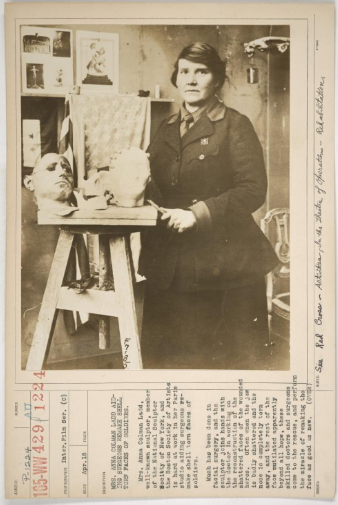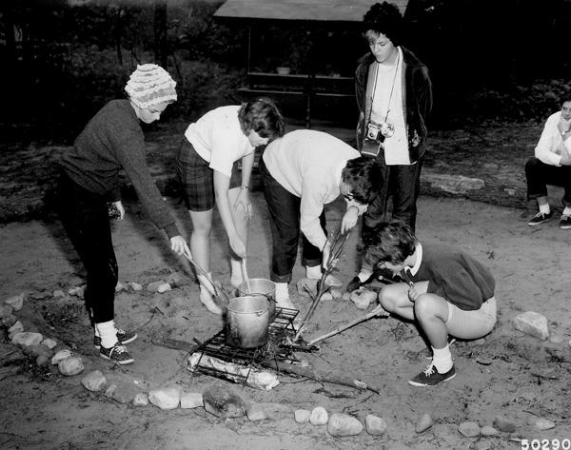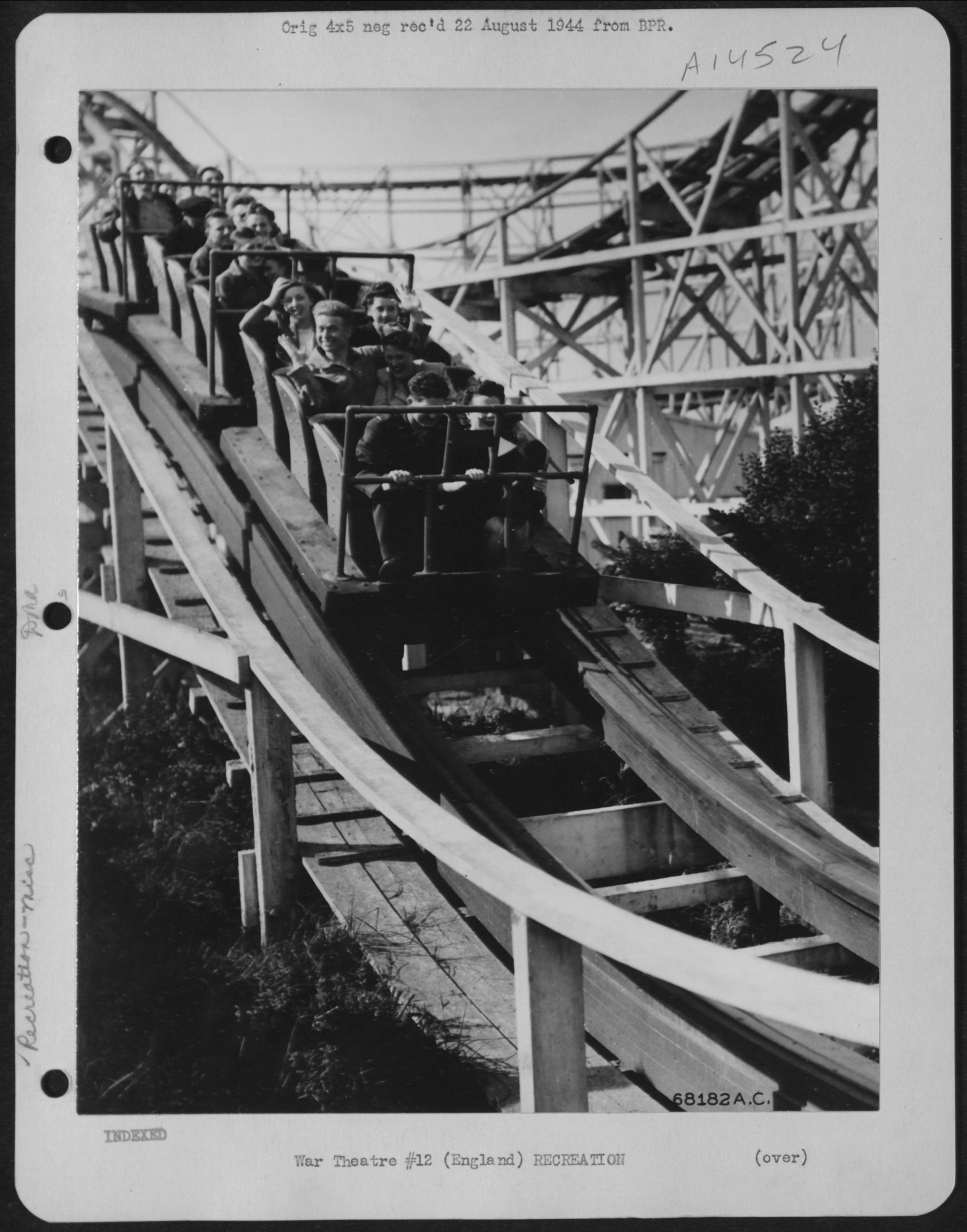Archives Experience Newsletter - March 16, 2021
Innovation Nation
How many times have you thought to yourself – how come no one has invented [insert your immediate need] yet? It seems so obvious, yet it doesn’t exist?! I can think of at least four great inventions I cooked up when my kids were toddlers that would have been personal life-savers. I haven’t patented them yet, so I can’t tell you what they are, but someday, parents will thank me!
Nowadays, internet ads hawk all kinds of specialty items that I look at and say, who in the world is going to pay $9.99 for that?! There is a market for just about anything, and the U.S. Patent and Trademark Office knows all about the inventor mindset, having issued more than 10 million patents. Everyone knows Edison, but for Women’s History Month, we chose to feature often-overlooked women inventors. One female inventor who secured not one, not two, but seven patents during the Civil War is Clarissa Britain, an American educator and innovator. Her patent for ambulances was issued on August 11, 1863, just over a month after the Battle of Gettysburg.
Ms. Britain’s productivity is audacious, but it is not necessarily unique. Everywhere and every time a need has arisen, inventors and innovators have stepped up and solved the problem. From the zany to the practical, the everyday to off-the-wall, the National Archives’ repository for patent applications gives you a front row view to it all.
💡
Patrick Madden
Executive Director
National Archives Foundation
Female Inventors You Should Know
For centuries, women have been creating, building, inventing, and innovating, but it wasn’t until 1809 when Mary Kies became the first woman to receive a U.S. Patent. Since then, countless other women have been granted patents for their inventions, many of which we use every single day. Here are just a handful of these remarkable women:
-
- – Sarah E. Goode: Sarah Goode was one of the first African American women to receive a U.S. patent when she invented the Folding Bed, which would fold up to resemble a desk when not in use.
- – Mary Anderson: In 1902, Mary Anderson patented the Window Cleaning Device, or what we know today as a windshield wiper blade.
- – Margaret E. Knight: As a young woman working in a paper bag plant, Margaret Knight created a Bag Machine that would automatically make paper bags with flat bottoms.
- – Marjorie S. Joyner: Marjorie Joyner was a teacher and advisor for the Walker Manufacturing Company when she invented the Permanent Wave Machine in the 1920s.
- – Josephine Cochran: While popular mostly in hotels and restaurants, Josephine Cochran’s Dish Washing Machine became the hot ticket item in homes by the 1950s.
- – Lizzie Magie: Lizzie Magie was a board game creator who patented The Landlord’s Game, which went on to inspire the game Monopoly.

National Archives Identifier: 7560384

National Archives Identifier: 7423796

National Archives Identifier: 176530307

National Archives Identifier: 167819674

Patent Drawing for J. G. Cochran’s Dish Washing Machine
National Archives Identifier: 12007675

National Archives Identifier: 595519
Patent Office Fire of 1836

On December 15, 1836,
a fire broke out in the basement of the Blodgett Hotel in Washington, D.C., where the U.S. Patent Office was housed. The local fire department was no match for the fire, which reduced the building to ashes in short order. The fire destroyed almost 10,000 patent drawings and 7,000 patent models. Following the fire, almost 3,000 patents, known as “X-patents,”
were resubmitted to the U.S. Patent Office by the inventors and restored.
185 Masks for Veterans

Necessity, they say, is the mother of invention. During World War I, terrible new weapons like machine guns killed millions of soldiers and inflicted gruesome wounds on many who were not killed outright. At the height of the worst battles in 1917, Anna Coleman Ladd, an American sculptor who was married to a doctor, moved with her husband to France. She heard of the work of Francis Derwent Wood, a London-based artist who was helping soldiers who had suffered horrific injuries to their faces. Inspired by Wood’s work, Ladd arranged to meet her and then persuaded the American Red Cross to pay for detailed facial masks for injured soldiers, who were often distraught about their wounds and self-conscious about being seen in public. Ladd opened a studio in Paris that was devoted to this work.
When 1919 ended,
Ladd and her assistants had made 185 masks designed to look like an uninjured face. They used copper and silver as the bases of the masks and painted them to match the soldiers’ skin tones exactly. Each mask cost $18. Ladd donated her services.
There is no doubt that Ladd’s work transformed the lives of many of the soldiers she worked with. After the war ended and the Red Cross ended their collaboration, Ladd returned to the United States and took up her work as an artist once again. She died in Santa Barbara, California, in 1939.
Did Somebody Say “S’mores” ?

Soon the temperatures will rise, and even though we are still feeling the effects of the COVID-19 pandemic, the advent of several vaccines has given us hope that we will be able to gather with family and friends again soon. In that spirit, we invite you to look at some of the ideas that inventors have submitted to the U.S. Patent Office that are essential for a good old fashioned camping trip: a
camp bed,
combined blanket and sleeping bag, a
hammock, and a
camping lodge. The Archives are also home to patent drawings for a
camp stove
and a utensil holder designed for use over a campfire
.
Down by the Boardwalk

If you’re pining for the chance to go to an amusement park with your friends this summer, these utility patent drawings of carnival-style rides might cheer you up! Wouldn’t it be fun to take a spin on this “
Amusement Device” or this
Merry-Go-Round? And, if you are really a thrill seeker, how about giving this
Roller Coaster a whirl?













